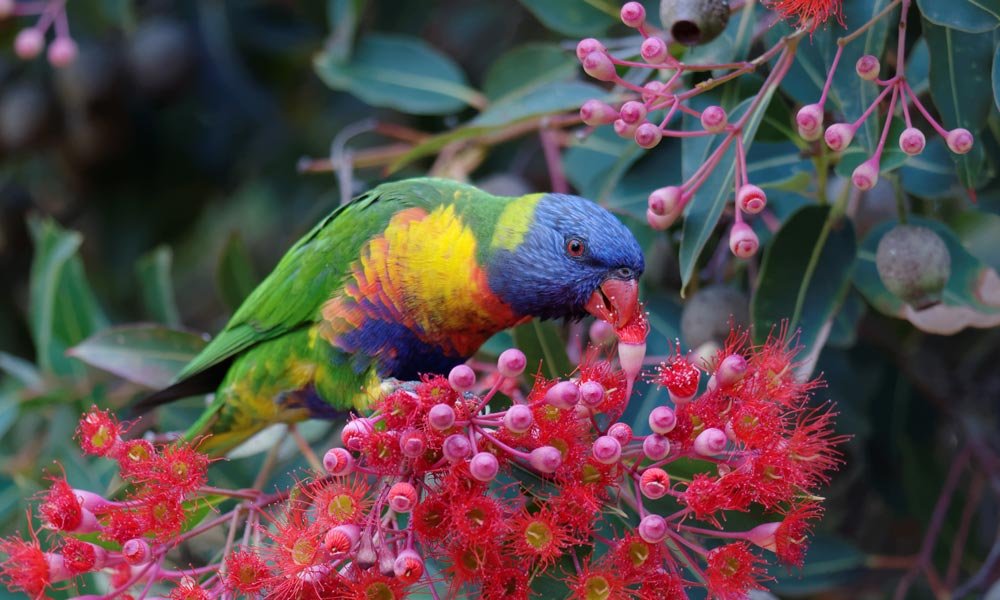Indigenous Plants To Restore Your Backyard
Ever wondered how you could completely transform and restore your backyard? Say hello to indigenous planting. Not only are indigenous plants built to the surroundings of your area, but they support Australian Native wildlife too. You can completely restore your backyard by planting indigenous plants while helping our native wildlife, the environment and even complete eco-systems. We love indigenous planting here at Urban Rewilding.
Why grow indigenous plants in your backyard?
Indigenous plants are the hardiest plants that we can choose from. Native plants exist naturally anywhere in Australia, however ‘indigenous plants’ exist naturally in a specific area. Cities across Australia will have entirely different indigenous plants that are native to them and their specific area. Indigenous plants are especially important in habitat creation, as they meet the needs and support the lives of our local wildlife.
If you have an outdoor garden space that's in need of a refresh, but live a busy lifestyle and don’t have much time to spend in your garden, then indigenous plants are the plants for you. Once established, indigenous plants are super easy to manage and will even provide you with various uses, such as cooking, baking or even medicinal use. Indigenous plants will completely transform and restore your backyard, with a selection of beautiful fruits and colours, these robust plants will also provide a sanctuary for our Australian wildlife - it’s a win-win.
Indigenous plants are easy to maintain
That’s right, indigenous plants don’t require much watering at all, in fact; they will survive off rainfall alone. They also don’t require fertilizers. This makes these plants super affordable as they require little upkeep. Since indigenous plants are built for our local conditions, this means that over time they’ve adapted to environmental surroundings, which adds to why they’re so robust.
Here are 4 indigenous plants that are native to Victoria that you can plant to help restore your backyard (if you’re a local, let us help get you started along your indigenous plant journey).
Mountain Pepper
Botanical name: Tasmannia lanceolata
Family: Winteraceae
The Mountain Pepper is a wonderful, frost tolerant, evergreen native shrub/tree that grows beautiful blue pepper berries that are packed with antioxidants. Native birds, such as the Black Currawong love to eat pepper berries, so you’ll be sure to attract loads of birds with this around. The Mountain Pepper shrub grows best in sheltered areas that see the morning sun. Plant Mountain Pepper in a well-drained spot. The Mountain Pepper will grow wonderfully in Melbourne's damp weather.
If you’re a sweet and savoury person then the Mountain Pepper shrub is for you. The earthy, peppery leaves can be used in spice blends or herb seasonings, and the beautiful fresh berries are beautiful for baking or jams.
Fact: For thousands of years, this shrub has been used as traditional natural food and medicine. In fact, The unripe berries had many uses, including being used to relieve rashes and sores. (2022).
2. Soft Tree Fern: Kombadi (Woi wurrung), Garak (Gunaikurnai)
Botanical name: Dicksonia antarctica
Family: Dicksoniaceae
Soft Tree Ferns are endemic to Australia - this means that they’re native to us, and us only. These robust ferns provide great shelter to birds and other wildlife. They can be found wide across Tasmania, Victoria, NSW and south-eastern Queensland, Dicksonia antarcticas are grown best in moist areas that are easily drained with filtered sunlight.
Soft Tree Ferns can be eaten and were mainly eaten in Victoria. People would eat “the starchy pith from the top part of the stem.” (Bunjilaka Aboriginal Cultural Center, 2022). Despite what many people think, this will not kill the fern. This big evergreen fern is a beautiful addition to any backyard.
3. Hemp Bush
Botanical name: Gynatrix pulchella
Family: Malvaceae
Hemp Bush or ‘Aboriginal Hemp’ can be commonly found across Victoria, New South Wales and Tasmania. This white and cream flower shrub has been used for centuries for its medicinal uses, to help heal boils and ulcers. (Wild Magazine, 2016). The bark was also often used to make string. Hemp Bush’s thrive in the rain that Victorian weather provides, given that they can be drained will. It will struggle in draughts so always make sure to keep this shrub well-watered.
4. Kangaroo Apple Mookitch (Gunditjmara)
Botanical name: Solanum aviculare
Family: Solanaceae
The Kangaroo Apple can be found across Australasia and is both native to South-eastern Australia and New Zealand.
Kangaroo apple plants are shrubs that grow gorgeous purple blossoms throughout Spring and Summer. This plant is often very happy to live next to a Eucalypts and Wattles plant. This ‘fleshy’ berry is an antioxidant and anti-inflammatory that has been used for centuries by the Aboriginal people for a number of its qualities. Kangaroo apple berries can be eaten, but only when they’re very ripe. When green they shouldn’t be eaten and are considered poisonous. This fruit is packed with Vitamin C and can be eaten fresh, it can also be used in baking, or to create a yummy jam or jelly.
Fact: This plant was used for contraception many years ago.
So there you have it, four beautiful indigenous natives with various uses that you should consider planting in your backyard to provide shelter and create an indigenous habitat in your suburban (or outback) area. We would love to help you along your indigenous planting journey here at Urban Rewilding, so if you have any questions, please phone Anna today at 0409 541 098.





